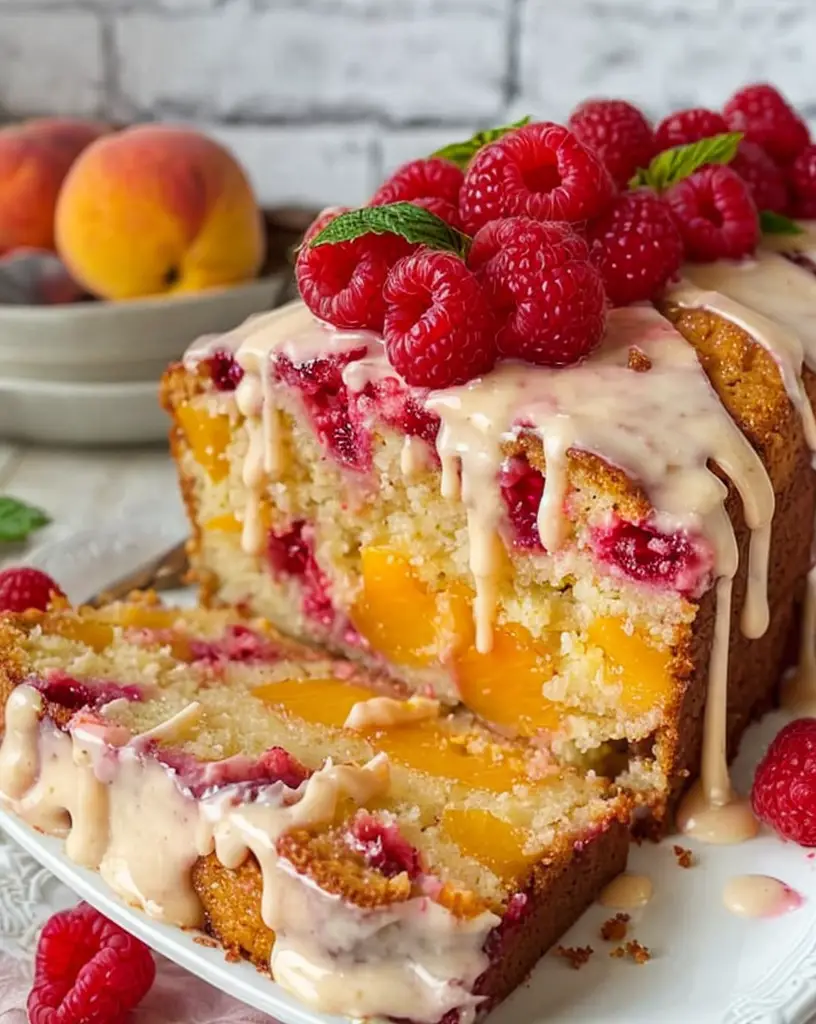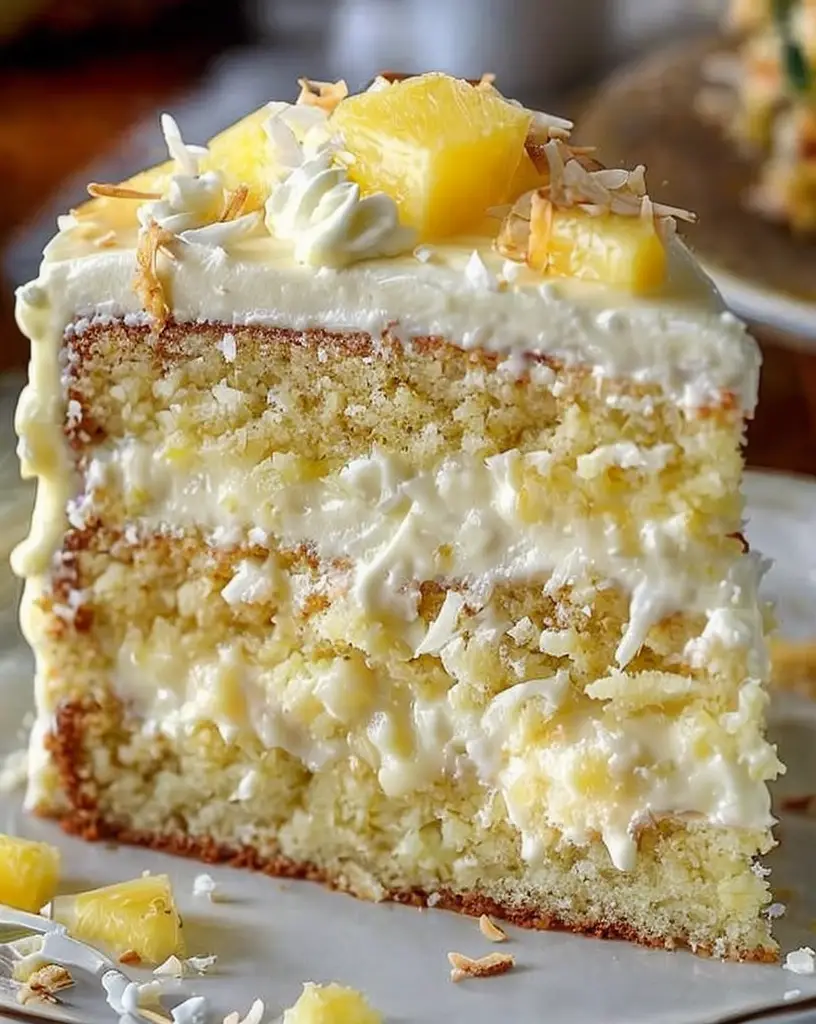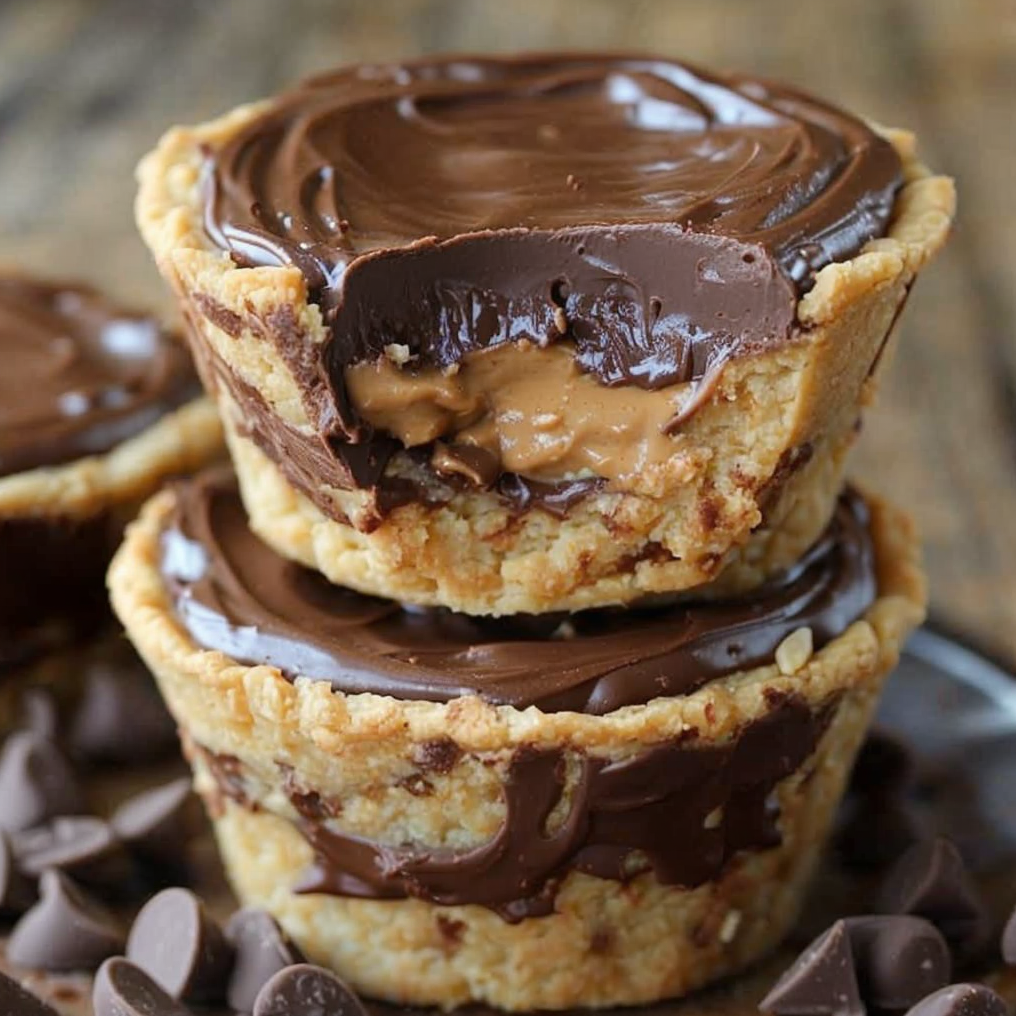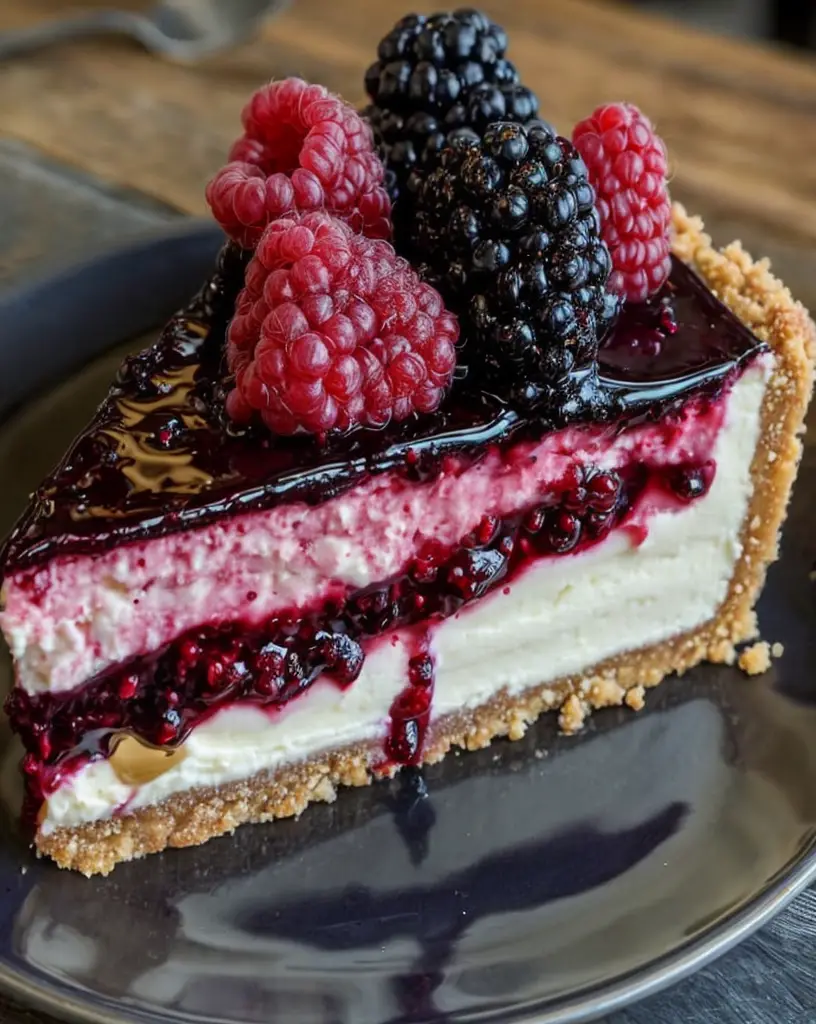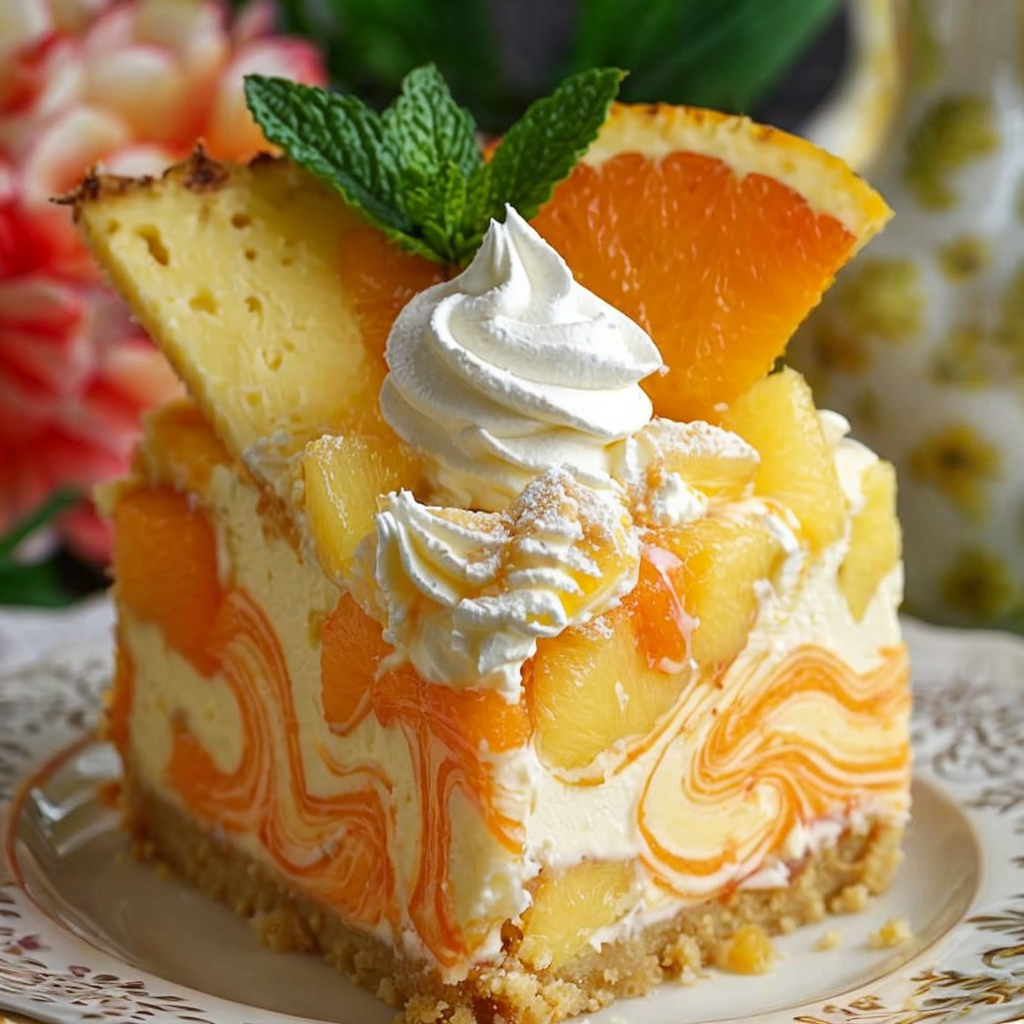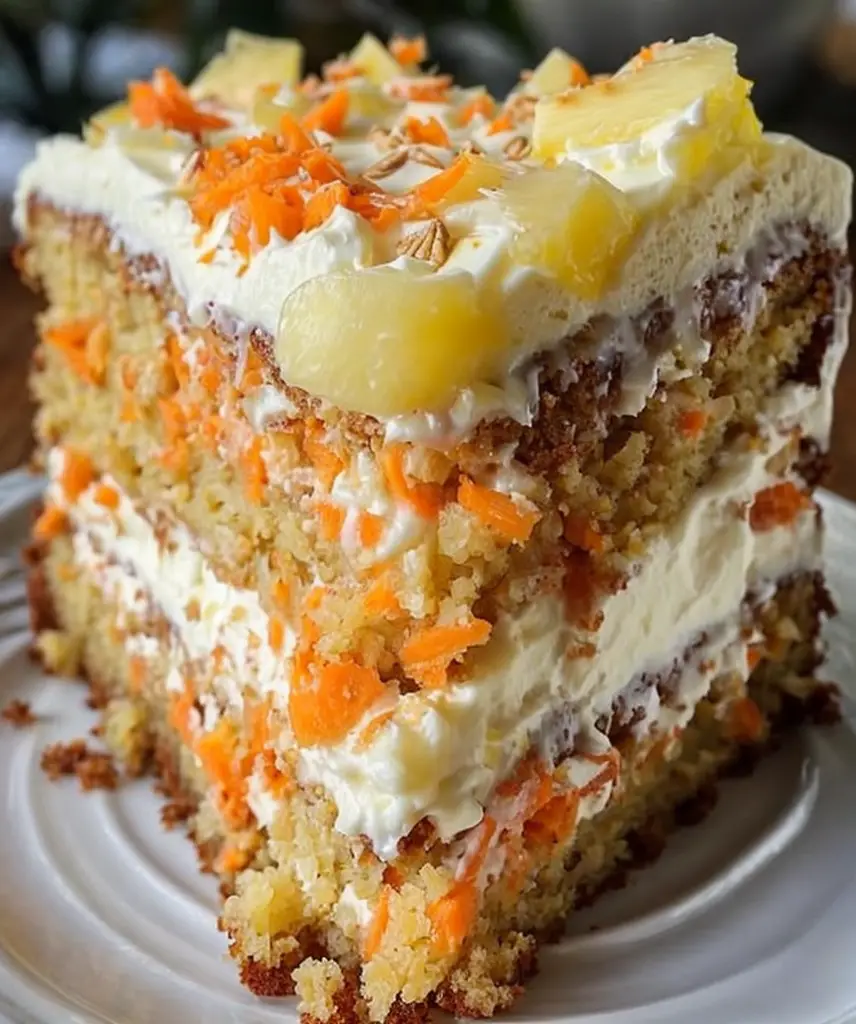Juicy Peach Raspberry Cake: A Summer Dessert Delight
Indulge in the sweet, sun-kissed flavors of summer with our Juicy Peach Raspberry Cake. This delightful cake features layers of ripe peaches and tart raspberries enveloped in a moist, buttery cake, creating a perfect balance of flavors. Each slice is a celebration of summer’s bounty, making it a must-try for any dessert lover.
As you bite into this cake, the juicy peaches release their natural sweetness, harmoniously complemented by the tangy raspberry undertones. This cake not only delivers a burst of flavors but also offers a beautiful presentation, showcasing vibrant colors that will impress your guests at any gathering. Whether for a picnic, birthday party, or just a lazy Sunday afternoon, this cake is sure to delight and satisfy.
Quick Recipe Highlights
- Flavor Profile: The combination of juicy peaches and tart raspberries creates a cake that is both sweet and slightly tart, making each bite refreshing.
- Texture: This cake boasts a light and fluffy texture, with juicy pieces of fruit that add bursts of moisture throughout.
- Aroma: The aroma of fresh peaches and raspberries baking in the oven is intoxicating, filling your kitchen with a sweet, inviting scent.
- Visual Appeal: Topped with a vibrant raspberry glaze, this cake is both stunning and irresistible, showcasing a beautiful gradient of colors.
- Skill Level Needed: This recipe is approachable for bakers of all levels, making it a fantastic project for both novice and experienced cooks.
- Special Equipment: Basic baking tools are required, such as mixing bowls, a cake pan, and an electric mixer for a smooth batter.
Recipe Overview
- Difficulty Level: This Juicy Peach Raspberry Cake is classified as medium in difficulty, as it involves mixing cake batter and preparing the fruit layer, but with careful attention, even beginners can master it.
- Category: This dessert fits beautifully into the category of cake and can be served at any gathering or special occasion.
- Cuisine: The recipe draws inspiration from classic American baking, blending seasonal fruits commonly found in summer recipes.
- Cost: With accessible ingredients, this cake is cost-effective, making it an economical choice for gatherings.
- Season: Late summer, when peaches and raspberries are at their peak, is the best time to enjoy this cake, allowing for the freshest flavors.
- Occasion: Perfect for summer barbecues, birthday celebrations, or a sweet treat at a picnic, this cake is versatile for many occasions.
Why You’ll Love This Recipe
This Juicy Peach Raspberry Cake is not just about looking delicious; it tantalizes your taste buds with a unique combination of flavors that details the essence of summer. The sweetness of ripe peaches, balanced with the tartness of fresh raspberries, creates a harmony you won’t forget.
Preparation for this cake is straightforward, allowing you to enjoy more time with friends and family rather than spending hours in the kitchen. This cake comes together quickly, making it a perfect option for anyone looking for convenience without sacrificing flavor.
Nutritionally, peaches are a good source of vitamins A and C, while raspberries offer antioxidants beneficial for your health. This cake provides a touch of indulgence while still being a bit kinder on your dietary goals.
The social aspect of baking this cake brings people together, from the mixing of ingredients to the final presentation. It’s perfect for sharing, whether you’re hosting a gathering or simply treating loved ones to a homemade dessert.
Lastly, this Juicy Peach Raspberry Cake proves to be real value for money. Whether bought from a bakery or prepared at home, it’s a delicious way to use seasonal produce and enjoy a rewarding dessert.
Historical Background and Cultural Significance
The origins of peach desserts date back to ancient Persia, where the fruit was celebrated for its sweetness. As peaches spread to Europe and then to America, they became a staple in many households, especially in southern cuisine, where recipes often highlight seasonal harvests.
Raspberries have a storied history too, cultivated since the Roman Empire. Their tartness complements sweet foods, making them a favored choice for desserts across various cultures. The combination of peaches and raspberries is a beautiful representation of the union of fruits from different backgrounds brought together in one delightful cake.
Over time, the recipe for peach and raspberry desserts has evolved, incorporating different techniques and amendments to suit modern palates. Layer cakes became popular in the 18th century, offering bakers creative freedom in combining flavors such as these.
Various regional variations also exist around this delightful duo, from cobblers in the south to savoury jams in the Pacific Northwest, showing the versatility and love for these fruits.
Ingredient Deep Dive
Peaches, a key ingredient in this cake, are often called “the fruit of the gods” for their sweetness and nectar-like flavor. Rich in vitamins, they aid in digestion and skin health, providing a sense of indulgence with nutritional value. When selecting peaches, opt for those that are firm yet slightly soft to the touch, indicating ripeness. Store them at room temperature until ripe, then transfer them to the refrigerator.
Raspberries add a vibrant color and tangy flavor to this cake. Known for their antioxidant properties, raspberries are a healthy addition to any dessert. When choosing raspberries, look for plump, firm berries with a deep red color. These delicate fruits should be used fresh or can be frozen; ensure they are carefully washed and dried before use to prevent mold.
Common Mistakes to Avoid
- Overmixing the batter: This can lead to a dense cake rather than a fluffy one. Mix until ingredients are just combined.
- Using unripe fruit: Unripe peaches or raspberries may not yield the sweetness expected. Always choose ripe, flavorful fruit.
- Not greasing the pan properly: A well-greased pan ensures the cake releases easily. Use butter or baking spray generously.
- Ignoring room temperature ingredients: Cold ingredients can affect the mixing process. Let eggs and dairy come to room temperature before using.
- Not preheating the oven: Always preheat your oven to the correct temperature to ensure even baking.
- Using the wrong baking pan size: Different pan sizes can affect baking times and results. Make sure to use the size specified in the recipe.
- Neglecting to cool the cake properly: Allowing the cake to cool too quickly can cause it to crack. Let it cool in the pan for a few minutes before transferring.
- Not tasting the batter: Always do a quick taste of your batter for seasoning and sweetness before baking, as it can affect your final cake.
- Skipping the glaze: The raspberry glaze not only adds flavor but also enhances the cake’s appearance. Always include it for the best presentation.
- Forgetting to check for doneness: Always use a toothpick or cake tester in the center to ensure the cake is fully baked before removing it from the oven.
Essential Techniques
One key technique in cake making is proper creaming of the butter and sugar. This step incorporates air, yielding a light and fluffy texture. To master this, ensure your butter is at room temperature and cream it with the sugar until it appears light in color and fluffy.
Another important technique is folding in the fruit. This gently incorporates the fruit without deflating the batter, preserving the cake’s lightness. Use a spatula to fold carefully, rotating the bowl as you go; this method keeps the batter airy while distributing the fruit evenly.
Pro Tips for Perfect Juicy Peach Raspberry Cake
1. For enhanced flavor, consider marinating the fruit in a bit of sugar for 30 minutes before incorporating it into the batter.
2. Experiment with adding spices like cinnamon or nutmeg to the batter for extra depth of flavor.
3. Keep your eggs and butter at room temperature for best mixing results; they’ll combine more smoothly.
4. Ensure that you do not open the oven door frequently while baking, as this can cause the cake to sink.
5. If you prefer a layered cake, consider making two thinner layers instead of one thick one for easier assembly and serving.
6. Allow the cake to cool completely before glazing to avoid the glaze melting into the cake.
Variations and Adaptations
Regional variations of this cake may use locally available fruits, such as blackberries or strawberries, instead of raspberries. Each variant brings its unique flavor while maintaining the essence of the recipe.
Seasonal adaptations can be achieved by incorporating spices like pumpkin pie spice in the fall or citrus zest in the winter for brightness. These variations offer exciting twists on the classic cake.
For those with dietary restrictions, this cake can be easily modified. Substitute traditional flour with gluten-free alternatives for a gluten-free version, or use coconut oil instead of butter for a dairy-free adaptation.
Serving and Presentation Guide
To effectively plate your Juicy Peach Raspberry Cake, consider using a decorative serving plate. Slice the cake into even pieces and arrange them in a circular shape, placing a mint leaf or extra berries on top for a pop of color. Watercoloring effects can be achieved by drizzling additional raspberry glaze on the plate beside each slice.
Traditional accompaniments may include vanilla ice cream or a dollop of whipped cream to enhance the dessert. For modern flair, consider a scoop of sorbet or a sprinkle of edible flowers for garnish.
Wine and Beverage Pairing
When deciding on a wine pairing, a light and fruity rosé complements the flavors of the cake beautifully, enhancing the fruity notes without overwhelming the palate. Opt for a sparkling wine if you prefer a fizz, as it also accentuates the freshness of the dessert.
For non-alcoholic alternatives, consider iced tea with a hint of lemon or a refreshing homemade lemonade. These beverages help cleanse the palate and carry through the fresh fruit flavors of the cake.
Storage and Shelf Life
To store this cake, wrap it tightly in plastic wrap and place it in an airtight container. When stored this way, it can last for about 3-4 days at room temperature or up to a week in the refrigerator.
If you notice any signs of spoilage, such as mold or an off-smell, it’s best to discard the cake. When reheating, ensure you do so gently in the microwave or toaster oven to retain moisture.
Make Ahead Strategies
If you’re preparing this cake in advance, you can bake the cake layers a day or two ahead. Wrap them well and store in the refrigerator until you’re ready to glaze and serve.
Consider preparing the raspberry glaze ahead of time as well; store it in a sealed container in the fridge. Just warm it slightly before drizzling over the cake for a fresh presentation.
Scaling Instructions
If you wish to half the recipe, simply reduce all ingredients proportionally. For doubling or tripling, adjust the ingredient amounts accordingly, but watch your baking time as larger cakes may take longer to bake than indicated in the recipe.
When scaling, also ensure your baking pans can accommodate the increased quantity, as different sizes may require precise timing adjustments to achieve even baking.
Nutritional Deep Dive
This cake’s macros primarily come from the sugar content and fruit, with a moderate calorie count. When portioned correctly, it can fit into a balanced diet while satisfying your sweet tooth.
Vitamin and mineral content is enhanced through the addition of peaches and raspberries, each contributing beneficial nutrients like fiber and antioxidants which aid in overall health.
Dietary Adaptations
For gluten-free adaptations, substitute regular flour with a gluten-free blend, keeping the measurements consistent. This ensures that the cake still rises and maintains its structure.
Dairy-free alternatives can be easily made by using almond milk and coconut oil in place of regular milk and butter. This version still retains the flavor while being suitable for those with lactose intolerance.
Troubleshooting Guide
If your cake comes out too dry, it could be due to overmixing or baking for too long. Always keep an eye on your cake towards the end of the bake time to avoid this issue.
Finding your cake too sweet? Adjust the sugar content next time and consider adding a pinch of salt to balance flavors.
Recipe Success Stories
Many readers reported delightful results when they shared their take on the Juicy Peach Raspberry Cake, highlighting how incorporating fresh local ingredients really elevated the flavors. These community feedback stories have inspired even more variations and unique adaptations.
Some bakers shared creative tips such as topping the cake with fresh fruit before serving, adding an extra burst of freshness while enhancing its aesthetic appeal.
Frequently Asked Questions
Can I use frozen peaches or raspberries?
Frozen fruit can be used, though it may release more moisture into the batter; ensure to adjust the baking time accordingly to account for added liquidity.
How can I know when my cake is done?
Insert a toothpick into the center, and if it comes out clean or with a few moist crumbs, your cake is done. If the batter sticks, give it a few more minutes in the oven.
Can I substitute other fruits?
Absolutely! Try incorporating other fruits like strawberries, blueberries, or even a mix for a delicious variation while keeping the same ratios.
How should I store leftovers?
Wrap the cake in plastic wrap and store in an airtight container to keep it fresh for several days. Alternatively, slice and freeze portions for longer storage.
Is this cake suitable for dietary restrictions?
Yes! The recipe can be easily modified to accommodate gluten-free and dairy-free diets with appropriate substitutions.
How do I prevent the bottom from burning?
Line your baking pan with parchment paper and don’t open the oven door too many times while baking.
What can I serve with this cake?
This cake pairs beautifully with vanilla ice cream, whipped cream, or a flavorful sorbet to complement the peach and raspberry flavors.
How do I enhance the raspberry flavor in the glaze?
Consider adding more fresh raspberries or a splash of raspberry extract to deepen the flavor in your glaze.
Can I make this cake ahead of time?
Yes! The cake layers can be baked in advance, wrapped tightly, and stored in the fridge until you’re ready to glaze and serve.
What variations can I try?
The possibilities are endless! Try adding nuts, chocolate chips, or swapping fruits based on the season for a unique twist.
Additional Resources
To further enjoy peach and raspberry desserts, check out our collections of summer recipes, including peach cobbler and raspberry parfaits, both of which celebrate these delightful fruits.
For tips on mastering cake baking techniques, visit our guides on mixing, folding, and layering to enhance your baking skills in the kitchen.
Join the Conversation
We invite you to share your creations and tips on social media, tagging your photos with our hashtag to join our community of enthusiastic bakers. Your feedback can inspire others on their baking journeys!
The Recipe
Juicy Peach Raspberry Cake
Serves: 8
Prep Time: 20 mins
Cook Time: 40 mins
Total Time: 1 hour
Kitchen Equipment Needed
- Mixing bowls
- Cake pan (9-inch)
- Electric mixer
- Spatula
- Measuring cups and spoons
Ingredients
- 2 cups all-purpose flour
- 1 ½ cups sugar
- 1 cup unsalted butter, softened
- 4 large eggs
- 1 cup peach puree (fresh or canned)
- 1 cup fresh raspberries
- 2 tsp baking powder
- ¼ tsp salt
- 1 tsp vanilla extract
- Raspberry glaze for topping
Directions
- Preheat your oven to 350°F (175°C) and grease your cake pan.
- In a mixing bowl, cream together the butter and sugar until light and fluffy.
- Beat in the eggs one at a time, mixing well after each addition.
- Add the peach puree and vanilla extract, mixing until smooth.
- In another bowl, whisk together the flour, baking powder, and salt.
- Gradually add the dry ingredients to the wet mixture, mixing until just combined.
- Gently fold in the raspberries, ensuring they are evenly distributed without crushing them.
- Pour the batter into the prepared cake pan and level the top with a spatula.
- Bake in the preheated oven for 35 to 40 minutes, or until a toothpick comes out clean.
- Allow the cake to cool in the pan for 10 minutes before transferring to a wire rack to cool completely.
- Once cooled, top with raspberry glaze before serving.
Recipe Notes
- For a richer flavor, you can add a dash of almond extract along with the vanilla.
- Be creative with the glaze; you can substitute with other berries for different flavors.
